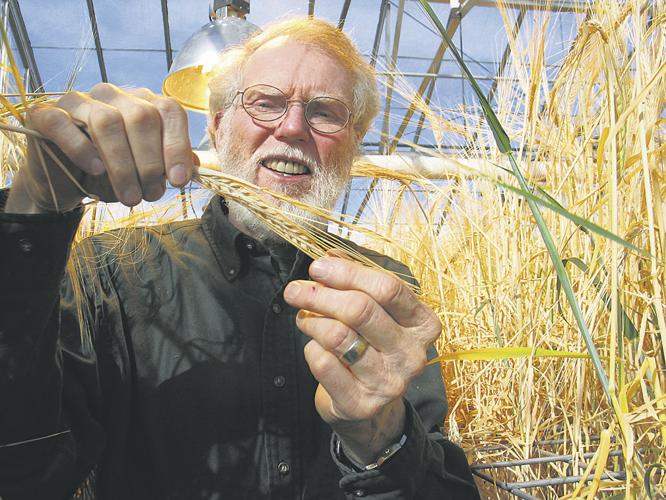Breeding Program
The WSU barley breeding program focuses on malt, food and feed varieties adapted to the diverse growing regions of Washington state and the Pacific Northwest. The bulk of our work is carried out on the WSU Spillman farm. The WSU breeding program first started in 1951 with the arrival of Robert A. Nilan, affectionately known as ‘Barley Bob’. Along with Carl Muir, Nilan released ‘Steptoe’, named after the local Steptoe Butte in 1968 that changed the barley world, becoming a parent in the first ever barley molecular map! Nilan also released:
- Luther (1967)
- Kamiak (1973)
- Boyer (1977)
- Blazer (1977)
- Advance (1983)
- Andre (1985)
- Cougbar (1986)
- Showin (1986)
- Hundred (1991)
- Vanguard (1991)
Nilan retired in 1992 and was replaced by Steve Ullrich who had already been present at WSU since 1978 along with close collaborator Andris ‘Andy’ Kleinhofs who had been at WSU since 1967. Other professors involved in barley research during this time included Diter von Wettstein and Roland Line (USDA-ARS), and eventually Xianming Chen (USDA-ARS). Ullrich released:
- Crest (1992)
- Bear (1997)
- Washford (1997)
- Farmington (2001)
- Bob (2002, named after Robert Nilan & Robert Eslick)
- Radiant (2003)
Ullrich retired in 2011 along with Kleinhofs in 2010, leading to Kevin Murphy taking over as the interim barley breeder. Murphy released multiple barley cultivars continuing Ullrich’s work including:
- Lyon (2013, feed, named after Steve Lyon)
- Muir (2013, feed, named after Carl Muir)
- Havener (2015, food)
- Meg’s Song (2017, food)
- Survivor (2017, IMI resistant)
- Palmer (2019, malt)
Bob Brueggeman, a student of Kleinhofs and Washington native, formally took the Robert A. Nilan Endowed Chair of Barley Research in 2019, transferring his lab from North Dakota State University.

Robert A. Nilan, 1958

Steven Ullrich, 2011